WESTERN HIMALAYAS

Peter van Ham has concentrated on what probably is the least known part of that area: The Indo-Tibetan borderlands that had been closed for foreigners for over forty years. These are comprised of the regions along the rivers Sutlej, Beas, Spiti, Chandra and Bhaga and parts of the Indus. They are found in two Indian states - Himachal Pradesh and Jammu and Kashmir and are called:
- Kinnaur
- Spiti
- Lahaul
- Rupshu (Changthang)
- Nubra
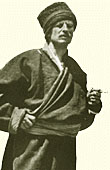
In the 30´s the eminent Italian tibetologist Guiseppe Tucci travelled along the Sutlej and the Spiti rivers up to Western Tibet to visit Tholing and Tsaparang. His detailed study of Tabo monastery ("Indo-Tibetica") is still state of the art.
Bottom left and right: Guiseppe Tucci and his caravan travelling through Kinnaur in 1933.
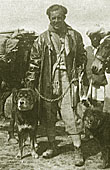
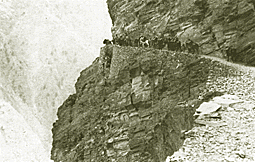
As may be seen from the pictures below, not much has changed in these regions since the eminent explorer´s days. In many areas the jhula (left) till the present day is the only means of crossing Sutlej or Spiti rivers and the many of their tributaries. However, today a motorable road runs breathtakingly above the streams towards the borders and allows transport with jeeps and other off-road vehicles.
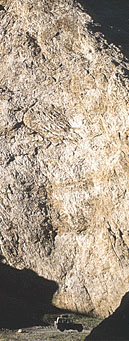
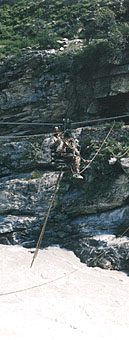
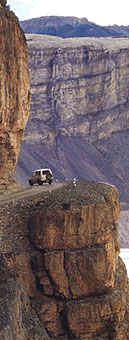
Accomodation in the Western Himalayas ranges from 5-Star Hotels in the major towns of Shimla, Manali and Leh till simple government rest houses and forest inspection bungalows along the routes in Kinnaur, Lahaul-Spiti and Ladakh. To be on the safe side tents and provisions should be carried along by oneself.
Culturally the Western Himalayas today is an amalgam of the Indo-Tibetan high religions of Buddhism and Hinduism, blended with unique forms of animism and local spirit beliefs. Here one may find the most ancient seat of Tibetan Buddhism existing in its original form (Tabo monastery), side by side with veneration of snakes and deities of water and the wind.
The Western Himalayas are the subject of three books by Peter van Ham:
BUDDHA´S MOUNTAIN DESERT
The Secret Tibetan Heritage in the Himalayas
THE FORGOTTEN GODS OF TIBET
Early Buddhist Art in the Western Himalayas
ON THE PATHS OF THE BUDDHA
2000 kms through the Western Himalayas (in German language)
on the Western Himalayan regions and sites:
KINNAUR, SPITI, TABO MONASTERY, LAHAUL, CHANGTHANG, NUBRA